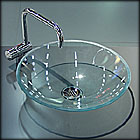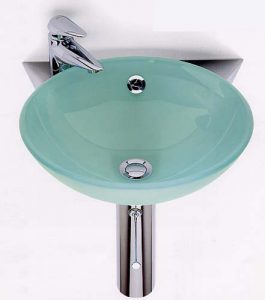Glass
Navigation
Property


Constituent
| Silica | The raw material is used in the form of pure quartz, crushed sandstone and pulverised flint. |
| Lime | A stabiliser is used in the form of limestone, chalk or pure marble and sometimes marl. |
| Soda | An accelerator, as carbonate and sulphate. |
| Potash | Makes glass fire resistant and render glass infusible. |
| Oxides | To improve the physical properties. |
| Cullets | Broken glasses, as a flux to prevent loss of alkali by volatisation and also to lower the fusion temperature. Stabilizer are needed to overcome some defects caused by adding broken glass. |
| Titanic acid, oxides of nickel and cobalt | Used for chromatic neutralisation |
[1]
| Density | 2.5 g/cm³ [8] |
| Tensile Strength | Toughened glass: 120-200 MPa (depending on thickness, edgework, holes, notches, etc) [8] |
| Elasticity | Glass is a perfectly elastic material. E= 7 x 1010 Pa [8] |
| Coefficient of Linear Expansion | 9 /ºC x 10-6 m/ mK [8] |
| Acid Resistance | Glass is only attacked by hydrofluoric acid. |
| Thermal Stress | Heat strengthening or toughening glass can stand temperature differences of 150 – 200 ºC [8] |